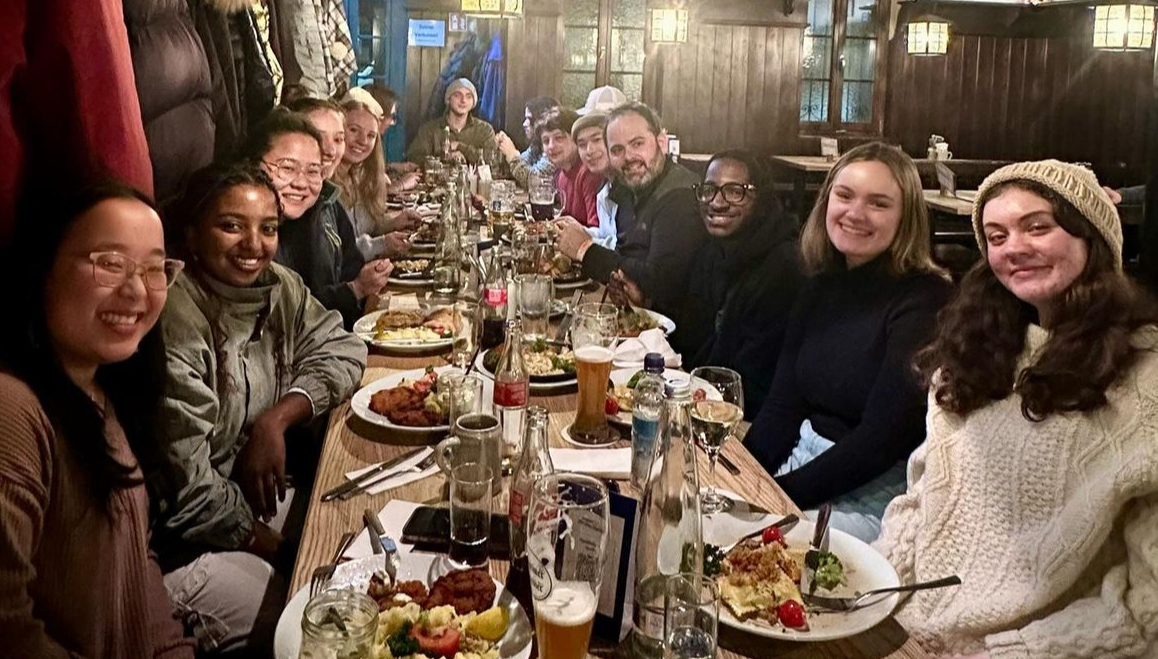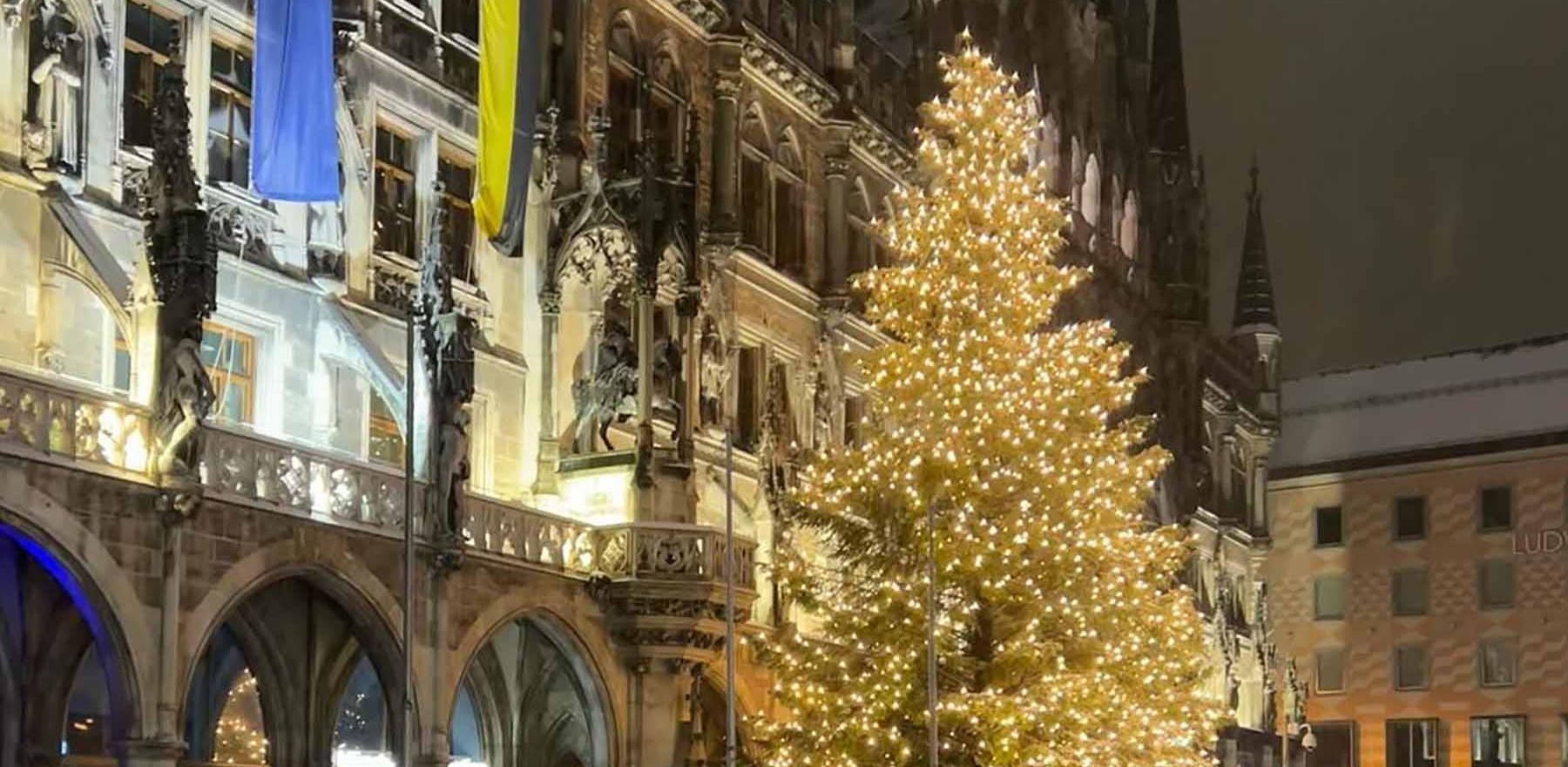Lehigh students visited Munich to learn about architecture and history in one of the university's longest-running and most popular study abroad programs
A group of Lehigh University students recently returned home from a visit to Munich, where they visited several historic locations and studied the history and architecture of the German city, as part of Lehigh’s longest-running winter study abroad program.
“After taking this program, I feel even closer to the Lehigh community,” said Andrea Zeien ‘24, an architecture major who was among 15 students who participated in the Lehigh in Munich program from Jan. 4 to Jan. 13.
“I was able to relate to my peers in such meaningful ways that would not be expected in the typical classroom setting,” Zeien said. “Even though it was only for 10 days, the connections and memories made with everyone that was part of the program were unforgettable.”
Now in its 13th year, the Lehigh in Munich program offers students the opportunity to visit historic sites, museums, private buildings, public squares, and streets in Munich, where they learn about architecture in the city and how it is woven into Munich’s history.
“We don’t have a classroom, it’s not a classroom program,” said Nik Nikolov, associate professor of architecture, who has taught the program since its inception. “It’s not a typical didactic environment in which I speak and they listen. It’s much more about being a curious tourist.”
Munich Becomes the Classroom
One of Lehigh’s most popular study abroad programs, Lehigh in Munich has had 121 participants since it began in 2014, according to Brian Wasserman, Study Abroad Advisor, who attended this year’s program. It has been held every year since its inception except for 2021 and 2022, when it was paused due to the COVID-19 pandemic.
“Munich really does become your classroom,” Wasserman said. “I found it fascinating.”
Among the places this year’s students visited was Olympiastadion, the stadium used for the 1972 Summer Olympics; Pinakothek der Moderne, a modern art museum in central Munich; Asam Church, the Baroque chapel St. Johann Nepomuk; and Alte Pinakothek, a fine art museum known for its large collection of Renaissance paintings. The group also traveled to the medieval town of Freising and Zigspitze, the highest peak in the German Alps.
“The city is the perfect background in which to discuss these topics because through the building environment and history, one can see attitudes toward politics, economics, architecture, and religion,” Nikolov said. “In so many ways the program is multidisciplinary in nature, which is really a result of the format and the setting.”
Cultural Immersion
Each student was assigned an architectural building in advance and prepared a report about it. The class then visited those places and listened as the student gave his or her presentation. They visited over 32 sites, including everything from newly-constructed buildings to historic spots that had to be repaired due to bombings during World War II.
“I knew, relatively speaking, very little about Germany and its food, language, art, architecture, customs, and social norms,” Zeien said. “However, in my opinion, no amount of prior research can compare to the lasting impact of total cultural immersion. Munich exceeded my expectations, to say the least.”
Roman Mitchell ‘24, another student who attended this year’s event, gave his presentation near the BMW Headquarters, a 22-floor tower considered one of the most prominent examples of modern architecture in Munich. It is designed by architect Karl Schwanzer in 1972, and together with the adjacent BMW Welt building designed by Coop Himmelblau in 2007 are prominent cultural staple of Munich.
“This is my first time being able to go out of the country, so I really liked the new perspective it gave me,” Mitchell said, who is majoring in industrial engineering. “Architecture isn’t directly related to my major, but I’ve always been very interested in it, and this program let me see things in a new perspective.”
Study Abroad Experiences

Lehigh offers a large variety of education abroad experiences, including study abroad, the Global Citizenship Program, and the Iacocca International Internship Program.
Lehigh had 759 student abroad experiences in 40 countries for the 2022-23 academic year. More than 300 programs were offered that year, and 31% of education abroad experiences included hands-on work, according to data reports recently released by Lehigh’s Office of International Affairs.
“Architecturally speaking, Munich, in my opinion, is an underrated gem of Europe,” Zeien said. “The city is so unique in that so much of it had to be rebuilt after the war. Learning about this and seeing firsthand how the city approached its reconstruction is something I think makes Munich a noteworthy destination for anyone interested in history, architecture, cities and technology.”
